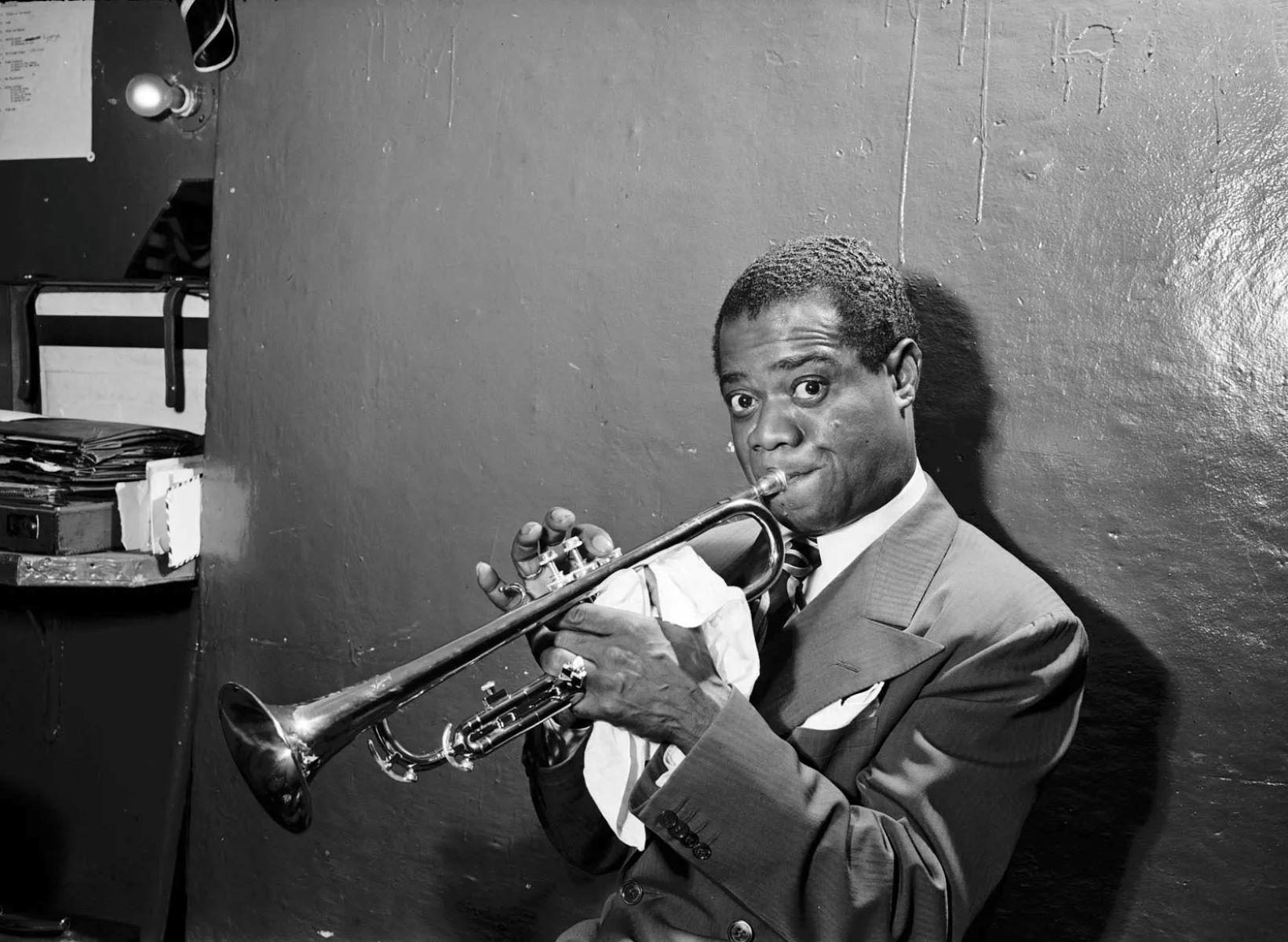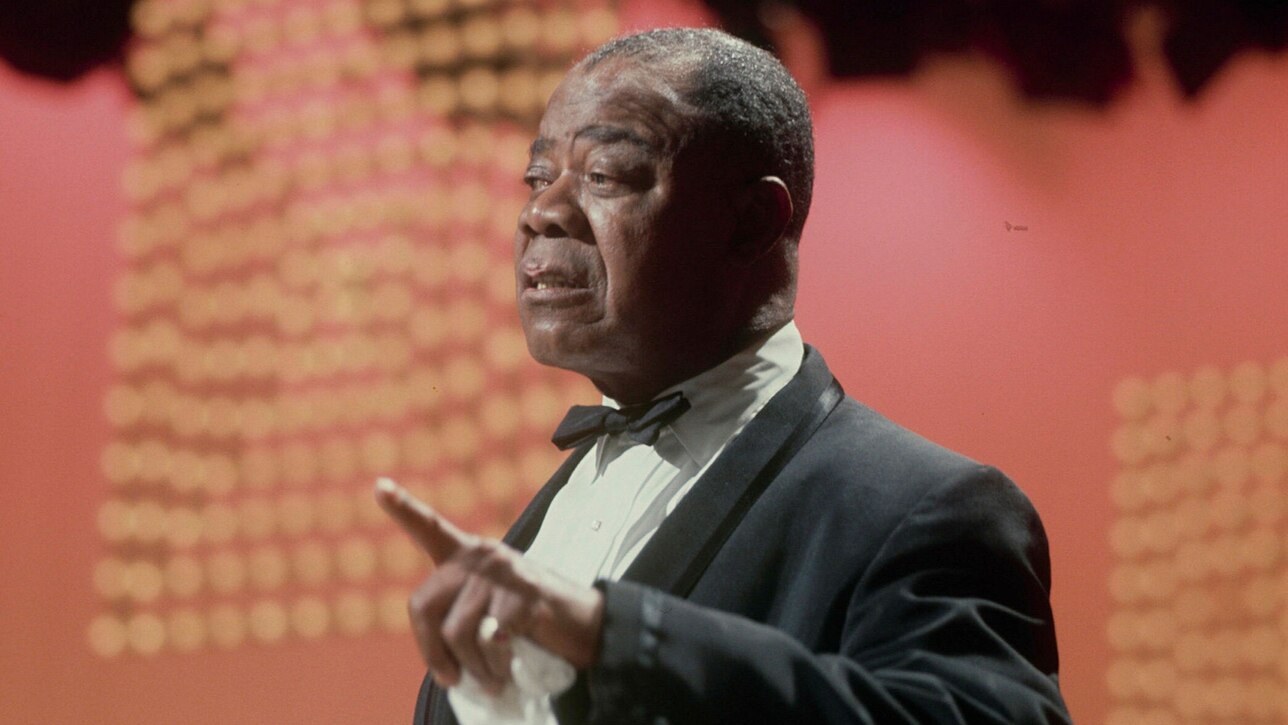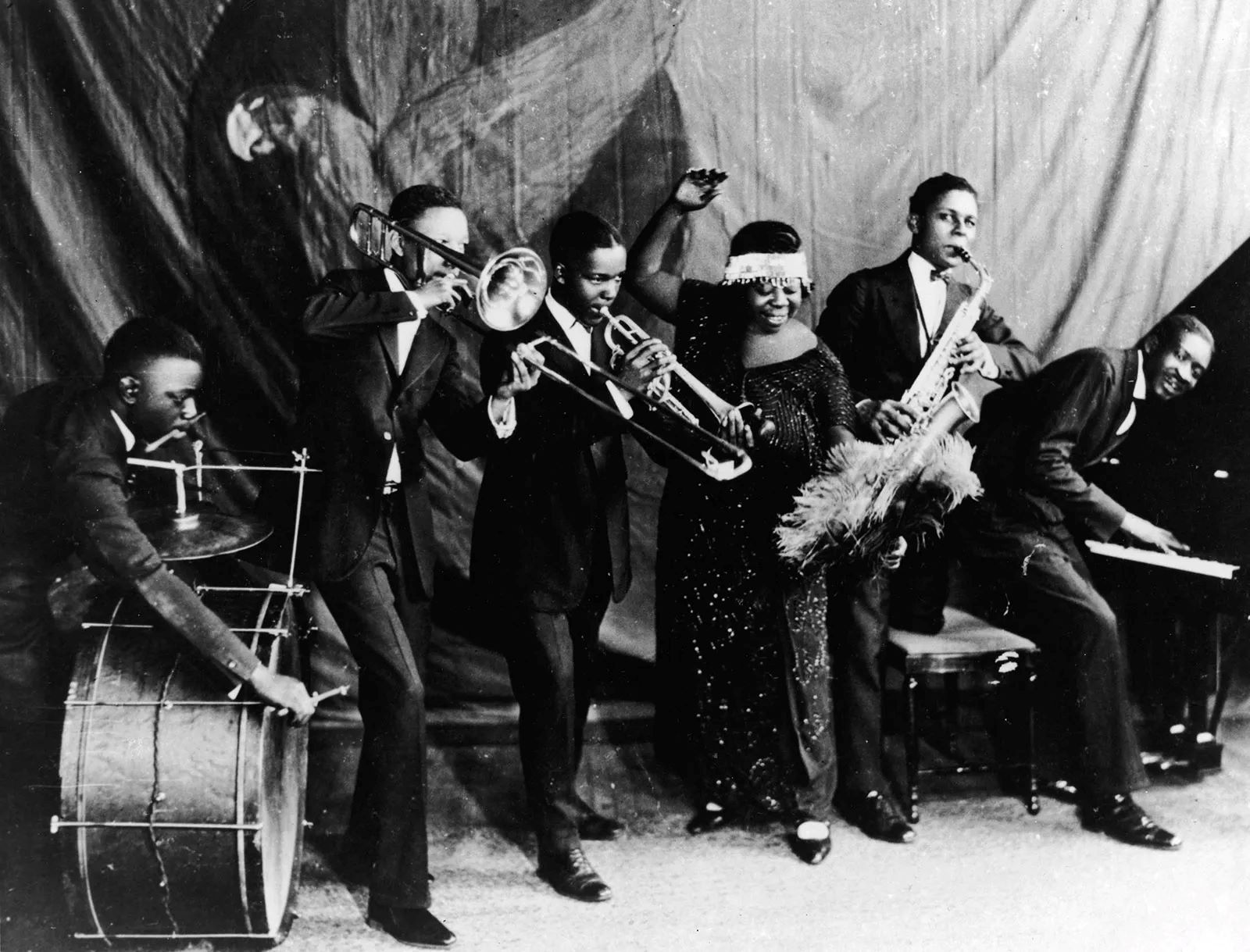Home>Genres>Jazz>When Did Louis Armstrong Start Playing Jazz


Jazz
When Did Louis Armstrong Start Playing Jazz
Modified: February 24, 2024
Discover the origins of jazz and the early musical journey of Louis Armstrong as he started playing jazz. Immerse yourself in the rich history of this iconic genre.
(Many of the links in this article redirect to a specific reviewed product. Your purchase of these products through affiliate links helps to generate commission for AudioLover.com, at no extra cost. Learn more)
Table of Contents
Introduction
Jazz, often referred to as America’s classical music, is a genre that has captivated audiences around the world for over a century. Its rich history is filled with influential musicians who have shaped and defined the genre. One of the most iconic figures in jazz is Louis Armstrong, whose virtuosity and charismatic persona continue to resonate with listeners today. In this article, we will explore the early life and musical influences of Louis Armstrong, as well as his journey in becoming a jazz pioneer.
Born on August 4, 1901, in New Orleans, Louisiana, Louis Armstrong grew up in a vibrant and musically diverse community. Surrounded by the sounds of brass bands, spirituals, and ragtime, Armstrong was exposed to a melting pot of musical styles. It was in these formative years that he developed a passion for music and began honing his skills as a musician.
Armstrong’s early musical influences were vast and varied. As a child, he was inspired by the sounds of the marching bands that paraded through the streets of New Orleans. He would often play along on a homemade cornet, imitating the melodies he heard. Armstrong also found inspiration in the blues and gospel music that he experienced in the local churches. These early influences would later become essential components of his unique musical style.
At the age of eleven, Armstrong found himself in the care of the Colored Waif’s Home for Boys, a reform school. It was here that he was introduced to the cornet, and his natural talent and dedication to practice quickly became apparent. Armstrong’s musical abilities caught the attention of the Home’s music director, Peter Davis, who became a mentor to the young musician. Davis taught Armstrong the fundamentals of music theory and provided him with a solid foundation to build upon.
As Armstrong continued to refine his skills on the cornet, he gained experience playing in various local bands and orchestras. It wasn’t long before his talent caught the ear of Joe “King” Oliver, a prominent cornetist at the time. Oliver became another influential figure in Armstrong’s life, taking him under his wing and teaching him the intricacies of jazz improvisation.
It was through these mentorships and his own relentless determination that Armstrong began to make a name for himself in the jazz world. His distinctive sound, characterized by his virtuosic playing, melodic improvisations, and dynamic vocalizations, quickly became sought after by leading jazz orchestras of the time.
In the following sections, we will delve deeper into Armstrong’s rise to stardom and his invaluable contributions to the world of jazz.
Early Life and Musical Influences
Louis Armstrong was born into humble beginnings on August 4, 1901, in New Orleans, Louisiana. Raised in a poverty-stricken neighborhood, Armstrong was surrounded by the vibrant sounds of the city, which would heavily influence his musical journey. New Orleans, known as the birthplace of jazz, was a melting pot of cultural and musical traditions, including African, European, and Caribbean influences.
As a child, Armstrong found solace in music. He was particularly drawn to the brass bands that played at various events and paraded through the streets of New Orleans. These brass bands, which combined elements of European military bands with African rhythms and improvisation, played a crucial role in shaping Armstrong’s musical taste and understanding of harmony.
Another significant musical influence on Armstrong’s development was the blues and gospel music he encountered in the local churches. He was profoundly moved by the emotional depth and expressive power of these genres, and they would later become integral aspects of his own musical style.
At the age of 11, Armstrong’s life took a significant turn when he was sent to the Colored Waif’s Home for Boys, a reform school. It was at the Home that he was introduced to the cornet, a brass instrument similar to a trumpet. Armstrong took to the cornet with great enthusiasm, practicing diligently and honing his skills.
While at the Home, Armstrong received music instruction from the school’s music director, Peter Davis. Davis recognized Armstrong’s natural talent and took him under his wing, providing him with valuable lessons in music theory and technique. Under Davis’s guidance, Armstrong’s proficiency on the cornet grew rapidly, setting the foundation for his future success.
Armstrong’s musical abilities and infectious personality soon caught the attention of Joe “King” Oliver, a prominent cornetist and bandleader in New Orleans. Oliver became both a mentor and a father figure to Armstrong, sharing his extensive knowledge of jazz improvisation and performance.
With his newfound skills and mentorships, Armstrong began making a name for himself in the local music scene. He would perform in various bands and orchestras, showcasing his exceptional talent on the cornet and captivating audiences with his exuberant stage presence.
In the next section, we will delve into Armstrong’s first experiences with jazz and how they propelled him towards a future of stardom and innovation in the jazz world.
First Experiences with Jazz
Louis Armstrong’s first experiences with jazz were a culmination of his early musical influences and his immersion in the vibrant New Orleans music scene. It was in this dynamic environment that he would begin to shape and develop his unique musical voice, eventually becoming one of the most influential figures in jazz history.
During his time at the Colored Waif’s Home for Boys, Armstrong had the opportunity to observe and learn from some of the finest jazz musicians in New Orleans. One of his most significant influences was Joe “King” Oliver, who recognized Armstrong’s talent and invited him to join his band, the Creole Jazz Band. This experience marked the beginning of Armstrong’s professional career in jazz.
Playing alongside Oliver, Armstrong learned the intricacies of jazz improvisation and developed his signature style. He became known for his virtuosic cornet playing, effortlessly blending melodic lines with syncopated rhythms and innovative phrasing. Armstrong’s playing was characterized by a rich and expressive tone, filled with emotion and personality that delighted audiences and fellow musicians alike.
Armstrong’s talent and musicality quickly garnered attention far beyond New Orleans. In 1922, he received an offer to join the renowned Fletcher Henderson Orchestra in New York City, becoming one of the first prominent African-American musicians to achieve success on a national scale. This move to New York City marked a turning point in his career, allowing him to further refine his skills and collaborate with some of the most influential jazz musicians of the time.
In addition to his instrumental prowess, Armstrong’s distinctive voice and scat singing also became an integral part of his musical expression. Scat singing is a vocal improvisation style where the singer uses nonsensical syllables to create melody and rhythm. Armstrong’s ability to improvise effortlessly on both his instrument and his voice set him apart as a true innovator in the world of jazz.
Throughout his career, Armstrong continued to push the boundaries of jazz, blending elements of blues, gospel, and popular music into his unique style. His influence extended beyond his musical contributions, as he became an iconic figure who transcended racial barriers and brought jazz to a wider audience. His infectious charisma and engaging stage presence won the hearts of fans worldwide, solidifying his status as a jazz legend.
In the following section, we will explore Armstrong’s remarkable rise to stardom and his invaluable contributions to the genre of jazz.
Rise to Stardom
Louis Armstrong’s journey from humble beginnings to international stardom is a testament to his immense talent, hard work, and undeniable impact on the world of jazz. With his virtuosic playing and charismatic personality, Armstrong rose to prominence during the vibrant Jazz Age of the 1920s and became an iconic figure in the music industry.
After joining the Fletcher Henderson Orchestra in 1924, Armstrong’s unique musical style and charismatic presence quickly drew attention. He contributed groundbreaking solos and arrangements to the band, elevating the overall sound and solidifying himself as one of the premier jazz musicians of the era. His recordings with the Fletcher Henderson Orchestra, such as “West End Blues” and “Struttin’ with Some Barbecue,” showcased his extraordinary talent and propelled him to national recognition.
In 1925, Armstrong formed his own band, the Hot Five, which later expanded to become the Hot Seven. These small ensembles allowed Armstrong to experiment with improvised solos and showcase his innovative approach to jazz. The recordings made by the Louis Armstrong Hot Five and Hot Seven, including classics like “Potato Head Blues” and “Weather Bird,” stand as some of the most influential and cherished recordings in jazz history.
One of the defining features of Armstrong’s rise to stardom was his ability to infuse jazz with his infectious personality and joyous spirit. His distinctive gravelly voice and scat singing added a new dimension to his performances, further captivating audiences and earning him a devoted fan base. His renditions of popular songs, such as “Hello, Dolly!” and “What a Wonderful World,” became iconic and widespread, transcending the boundaries of jazz and becoming international hits.
Armstrong’s popularity extended beyond his musical performances. He starred in several films, including the critically acclaimed “High Society,” alongside Bing Crosby and Frank Sinatra. Armstrong’s on-screen charisma and magnetic presence brought jazz to a wider audience, solidifying his status as not just a musician, but as a cultural icon.
Throughout his career, Armstrong continued to tour extensively, both in the United States and internationally. His concerts were highly anticipated events, drawing large crowds and breaking down racial barriers. Armstrong’s music became a unifying force, bridging gaps and bringing people together through the power of jazz.
Despite facing racism and adversity throughout his life, Armstrong’s talent and unwavering dedication to his craft ensured his enduring legacy. He paved the way for future generations of jazz musicians, leaving an indelible mark on the genre that still resonates to this day.
In the next section, we will further explore Armstrong’s invaluable contributions to jazz and his lasting impact on the world of music.
Contributions to Jazz
Louis Armstrong’s contributions to jazz are immeasurable, as he revolutionized the genre and left an indelible mark on its evolution. Through his virtuosic playing, innovative improvisation, and magnetic stage presence, Armstrong reshaped the landscape of jazz and set new standards for musicians to follow.
One of Armstrong’s most significant contributions to jazz was his mastery of improvisation. He took the art of soloing to new heights, incorporating dazzling melodic lines, intricate rhythms, and expressive nuances. His ability to create spontaneous, coherent, and captivating solos revolutionized jazz and became a model for generations of musicians. Armstrong’s improvisational prowess paved the way for new possibilities within the genre, greatly expanding its creative boundaries.
Another key contribution is Armstrong’s role in popularizing scat singing. His inventive vocal improvisations, using nonsensical syllables to create melody and rhythm, added a new dimension to his performances. Armstrong’s scat singing became iconic and influential, inspiring countless vocalists and adding a playful, instrumental quality to his music.
Moreover, Armstrong’s technical mastery of the trumpet and cornet set new standards for brass players in jazz. His innovative use of melody, phrasing, and tone inspired a generation of musicians. Armstrong’s powerful, expressive playing, characterized by his vibrant tone and impressive range, forever influenced the way jazz trumpet was heard and played.
Armstrong’s impact reached beyond his instrumental and vocal abilities. He also made significant contributions to jazz through his collaborations and recordings. His work with influential jazz ensembles, such as the Hot Five and Hot Seven, produced groundbreaking recordings that captured the essence of early jazz. These recordings, characterized by their innovative arrangements and virtuosic performances, have stood the test of time and continue to be celebrated for their musical brilliance.
Furthermore, Armstrong played a pivotal role in breaking down racial barriers within the music industry. As one of the first African-American musicians to achieve widespread fame and success, he defied societal norms and paved the way for future generations of black musicians. Armstrong’s success and popularity helped challenge racial segregation and discrimination, contributing to the gradual integration of jazz and popular music.
Beyond his musical contributions, Armstrong’s warm and charismatic personality endeared him to audiences worldwide. His infectious smile, witty stage banter, and genuine love for music created an intimate connection with listeners. Armstrong’s ability to connect emotionally with his audience added a depth of humanity to his performances, making them unforgettable experiences for all who witnessed them.
In summary, Louis Armstrong’s contributions to jazz are far-reaching and profound. Through his innovative playing, improvisational genius, popularization of scat singing, technical mastery, and groundbreaking recordings, he helped shape the course of jazz history. His impact continues to resonate, influencing countless musicians and perpetuating his legacy as one of the greatest and most influential figures in the world of jazz.
Legacy and Impact
Louis Armstrong’s legacy in the world of music is immeasurable. His long and illustrious career not only revolutionized jazz but left an indelible mark on the entire landscape of popular music. His contributions continue to inspire and influence musicians of all genres, making Armstrong an enduring cultural icon.
One of the most significant aspects of Armstrong’s legacy is his innovative and virtuosic playing style. His technical prowess on the trumpet and cornet set new standards for brass players, and his improvisational skills pushed the boundaries of jazz. Armstrong’s intricate melodies, rhythmic complexities, and groundbreaking use of phrasing forever changed the way jazz was played and appreciated.
In addition to his instrumental brilliance, Armstrong’s vocal talents were equally influential. His gravelly voice, scat singing, and unique interpretations of popular songs captivated audiences worldwide. His renditions of classics like “What a Wonderful World” and “Hello, Dolly!” became timeless and beloved, showcasing Armstrong’s ability to infuse songs with heartfelt emotion and soulful expression.
Armstrong’s impact extended beyond his musicality. He played a crucial role in breaking down racial barriers in the music industry, becoming one of the first African-American musicians to achieve commercial success on a global scale. As a trailblazer, Armstrong inspired future generations of black musicians and paved the way for greater racial equality in the arts.
Furthermore, Armstrong’s infectious personality and joyful stage presence endeared him to audiences of all backgrounds. His ability to connect with listeners on an emotional level transcended language and cultural barriers, leaving a lasting impact on his fans. Armstrong’s charisma and charm made him a beloved figure, and his stage persona became synonymous with the spirit of jazz itself.
Armstrong’s influence is evident in the work of countless musicians who followed in his footsteps. His innovative playing and improvisational techniques directly shaped the development of jazz, inspiring generations of performers to strive for musical excellence. Artists such as Miles Davis, Dizzy Gillespie, and Wynton Marsalis attribute a significant portion of their musical success to Armstrong’s groundbreaking contributions.
Beyond the world of jazz, Armstrong’s impact can be felt in various genres of popular music. His vocal style and scat singing have influenced singers across genres, including Frank Sinatra, Ella Fitzgerald, and even contemporary artists like Michael Bublé. Armstrong’s recordings are timeless classics that continue to be celebrated and enjoyed by music lovers of all ages.
In recognition of his extraordinary talent and contributions to music, Louis Armstrong received numerous accolades throughout his career, including induction into the Rock and Roll Hall of Fame and the Grammy Lifetime Achievement Award. His influence and legacy endure, ensuring that his contributions to jazz and music as a whole will be celebrated for generations to come.
Conclusion
Louis Armstrong, with his immense talent, innovative spirit, and infectious charisma, forever transformed the world of jazz. From his humble beginnings in New Orleans to his international stardom, Armstrong’s contributions to music are immeasurable, leaving a lasting legacy that continues to resonate with audiences today.
Armstrong’s fusion of technical brilliance, improvisational genius, and soulful expression set a new standard for jazz musicians. His virtuosic playing on the trumpet and cornet pushed the boundaries of what could be achieved on these instruments, inspiring countless musicians to strive for excellence. His groundbreaking use of improvisation and his mastery of scat singing added a unique and personal touch to his performances, forever altering the course of jazz history.
Beyond his musical talents, Armstrong also played a central role in breaking down racial barriers in the music industry. As one of the first black musicians to achieve widespread fame and success, Armstrong shattered stereotypes and paved the way for future generations of artists. His influence extended beyond the world of jazz, touching various genres of popular music and inspiring countless singers and instrumentalists to embrace their individuality and expressiveness.
Perhaps most importantly, Armstrong’s infectious personality and joyous stage presence endeared him to audiences around the world. His ability to connect emotionally with his listeners, regardless of cultural background, made him a beloved figure and a true ambassador for jazz and American music. Armstrong’s legacy is one of joy, innovation, and inclusivity, reminding us of the power of music to unite and transcend boundaries.
In conclusion, Louis Armstrong’s impact on jazz and music as a whole cannot be overstated. His contributions continue to be celebrated, studied, and emulated by musicians of all generations. His innovative playing, emotional depth, and unwavering passion for his craft have left an indelible mark on the world of music. Louis Armstrong, the jazz pioneer, will forever be remembered as a legendary figure who shaped the course of jazz and brought the joy of music to the hearts of millions.











